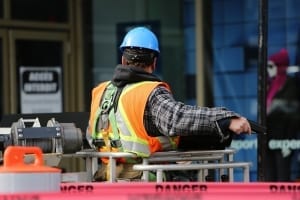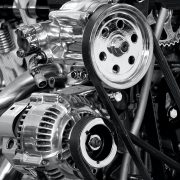Safety Checklist: 8 Things to Consider at Work

#1. Regular Audits:
Health and safety isn’t something that you can deal with once and then forget about; it must be regularly revisited to ensure that everything is up to scratch. The best way to do this is by conducting regular health and safety audits so that you can see if there’s anything that needs to be adjusted, replaced, or re-done. Audits should look for any potential hazards, no matter how small, and make sure that all employees are aware of their role in keeping the workplace safe. An ideal way to do this is by using a job safety analysis worksheet – use a program such as JSA Builder which allows you to collaborate with employees to share knowledge, mitigate the most hazardous tasks, customize procedures for your workplace, make more informed decisions, upload photographs and much more. To learn more about this program and how it can help your workplace be safer overall, follow this link for more info.
#2. Employee Training:
No matter how much effort you put in to making sure that your workplace is safe and risk-free, it can only stretch so far when employees are not aware of the role that they play. It’s a wise idea to invest in health and safety training for each employee, and make sure that they know which hazards to look out for and what to do in the event of each type of hazard. Often, it will be easy for employees to deal with the hazard themselves – for example, if they find a spillage or other trip hazard that can be cleaned up immediately. In other instances, it may be the right procedure to report the hazard so that it can be removed. Lay out clear expectations and safety regulations for employees and display these around the workplace so that they can be referred to at any time as and when needed. And, encourage communication regarding hazards. Make sure that employees know that it’s always better to double check if they are not sure, rather than ignore something that could potentially pose a safety risk to themselves and their colleagues.
#3. Equipment Training:
If your employees need to use machinery or other equipment as part of their job, then it’s important to have stringent rules in place regarding their use, particularly if the machinery could be dangerous. First of all, make sure that any employees who use this equipment or machinery regularly are fully trained to do so; never let any employee who has not been trained how to use equipment use it, for both safety and insurance purposes. If necessary, you should also make sure that employees are provided with any Personal Protective Equipment (PPE) necessary to use machinery and other equipment safely, such as goggles and ear defenders, high-visibility clothing, hard hats, and protective footwear. No employee should be allowed to enter an area or use equipment that requires PPE without the correct gear. Finally, it’s a good idea to revisit training regularly and offer employees refresher courses – particularly if equipment is changed or upgraded.
#4. First Aid:
Your workplace should be supplied with an extensive, fully-stocked first aid kit. Depending on the type of work that is done by employees, the kit should be filled with a variety of different items. If burns are a risk in your workplace, for example there is a kitchen or employees are working with heated equipment, you should also supply a burns first aid kit in addition to the regular one. First aid kits should be provided in every type of workplace, even in an office where workers could be subject to injuries from falls, cuts and scratches. Lastly, it’s a good idea to offer certain members of staff first aid training; this allows somebody to be there as a first responder should an injury occur with a colleague, client or customer. Regularly double check the first-aid kit to re-stock it and ensure that all items are within the use-by date. This will vary depending on the type of item, but everything from bandages to antiseptic wipes will need to be replaced eventually.
#5. Review Emergency Procedures:
Make sure that all employees are fully aware of the procedures that they will need to take should an emergency arise while they are at work. Fire is a real hazard in all types of workplaces and one can start anywhere from the office to factories, so in addition to training, make sure that you have a fully working fire alarm system and regularly test it. Train your employees on what to do in the event of an employee emergency, fire, attack or other hazardous situation, and ensure that there is clear signage showing them what to do. For example, they will need to know where the emergency meeting point is, where they can pull the nearest fire alarm, and which emergency exit is the closest to them. Regularly review these procedures and make sure that each employee knows exactly how to react.
#6. Keep it Clean:
A workplace that is not kept regularly clean and tidy is not only horrible for employees to work in; it can also pose a health and safety hazard. A clean, clutter-free and tidy workplace will make a more pleasant environment for everybody and can actually help to boost employee mental health too, leading to better job satisfaction and productivity. Untidiness can pose all kinds of hazards from trips and falls to fire risks, so make sure that cleaning up is a priority for every member of staff. Provide enough waste bins around the work floor or office for employees to use and make sure that the restrooms are cleaned at least once per day. Rodent infestations are also a large problem caused by unclean workplaces, so make sure that you are aware of the signs – shiny droppings or gnawed food packages are usually a big tell-tale sign that rodents are in your workplace. If you suspect this, call pest control immediately as it’s not usually a problem that goes away on its own. It’s also a good idea to get a professional cleaner in to conduct a deep clean of your workplace at least once per week.
#7. Require Correct Footwear:
The clothing and uniform that your employees wear to work will largely depend on the type of environment that they are working in. Office environments tend to be more relaxed with footwear, and safety isn’t usually a big priority, however, in industrial and many other environments, there will need to be strict rules provided in order to keep employees both safe and comfortable. It’s important that each employee in this kind of work environment is wearing shoes that are not only the correct fit, but also provide the right amount of protection, such as covering the entire foot and made of a durable and protective material. If necessary, for example, in a warehouse environment or when working with heavy machinery, workers will need footwear that offers additional protection such as boots or shoes with steel toe caps. As an employer, you should work with your employees to provide a footwear program that ensures proper protection and the correct fit.
#8. Lighting:
Lighting can pose a bigger hazard than you think in any workplace environment, even in a relaxed office. Making sure that there is proper lighting in the office will help to prevent eye strain for employees who work predominantly on computers, and providing adequate lighting in stairwells and other workplaces areas is necessary to prevent falls, trips and other accidents. If your workplace has a parking lot, make sure that there is also adequate lighting outside so that both employees and visitors have a safe journey from the workplace to their car. Regularly check light bulbs and replace any that are broken or have gone out.
Health and safety in the workplace covers a wide spectrum, and hazards will vary depending on the type of work that is done by employees. However, from quiet offices to busy factories and warehouses, building sites and workers who travel, there are always potential hazards that each employee will need to be aware of. A full health and safety audit will allow you to determine the biggest risks for your workplace; then work together with your team to keep it safe for everyone.













Leave a Reply
Want to join the discussion?Feel free to contribute!